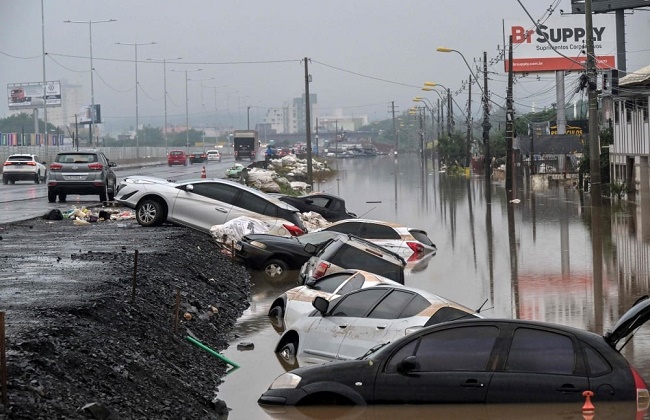
River levels rose again Sunday as strong rains lashed waterlogged southern Brazil, where flooding has killed 145 people and forced hundreds of thousands from their homes.
Residents of the state of Rio Grande do Sul were bracing for more misery from the new rains, after two weeks of downpours saw rivers burst their banks, swallowing up towns and parts of the regional capital.
More than two million people have been affected by the deluge, which experts link to climate change exacerbated by the El Nino weather phenomenon.
The levels of “practically all the major rivers in the state are tending to rise,” state authorities said Sunday.
The probability of further flooding is “very high” in most regions of the state, according to the National Center for Monitoring and Warning for Natural Disasters (Cemaden).
A total of 132 people have been reported missing and 619,000 have been forced from their homes, civil defense officials said in an update Sunday evening.
The new threat comes as rescue operations are still underway, with some 130 people missing, while more than 619,000 were forced to leave their homes.
In the flooded historic center of state capital Porto Alegre, sofas and other belongings could be seen floating in muddy waters.
Further north in the town of Sao Leopoldo, a line of cars lay half submerged where they had parked along the road. Elsewhere, people rowed boats down flooded streets.
Electrician Claudio da Silva, 36, went to check on the situation in his neighborhood, describing his house as “broken”.
“My brother-in-law’s house next door had water halfway up the second floor. Now it’s gone down a bit and you can get to the second floor, but it’s a mess. There are lots of dead animals. It’s very, very, sad.”
Metallurgist Antonio Vanzan, 50, described the situation as “critical.”
“If the rain doesn’t stop falling, what is going to happen? The level of the river may increase and thewater will return inside the neighborhoods.”
The Guaiba, an estuary bordering state capital Porto Alegre, had on Saturday reached its lowest level since May 3.
Parts of Porto Alegre, which is home to 1.4 million people, also remain underwater.

